Maintaining year-round interest and beauty in outdoor spaces requires winter gardening. You can turn the winter months into brilliant displays of color and life by adding winter-blooming plants.
Finding plants that can flourish in the cold and add color to desolate environments is the difficult part.
With the right winter-blooming plants, you can design a garden that is cheerful and has evergreen foliage, even though it defies the season.
Winter Jasmine
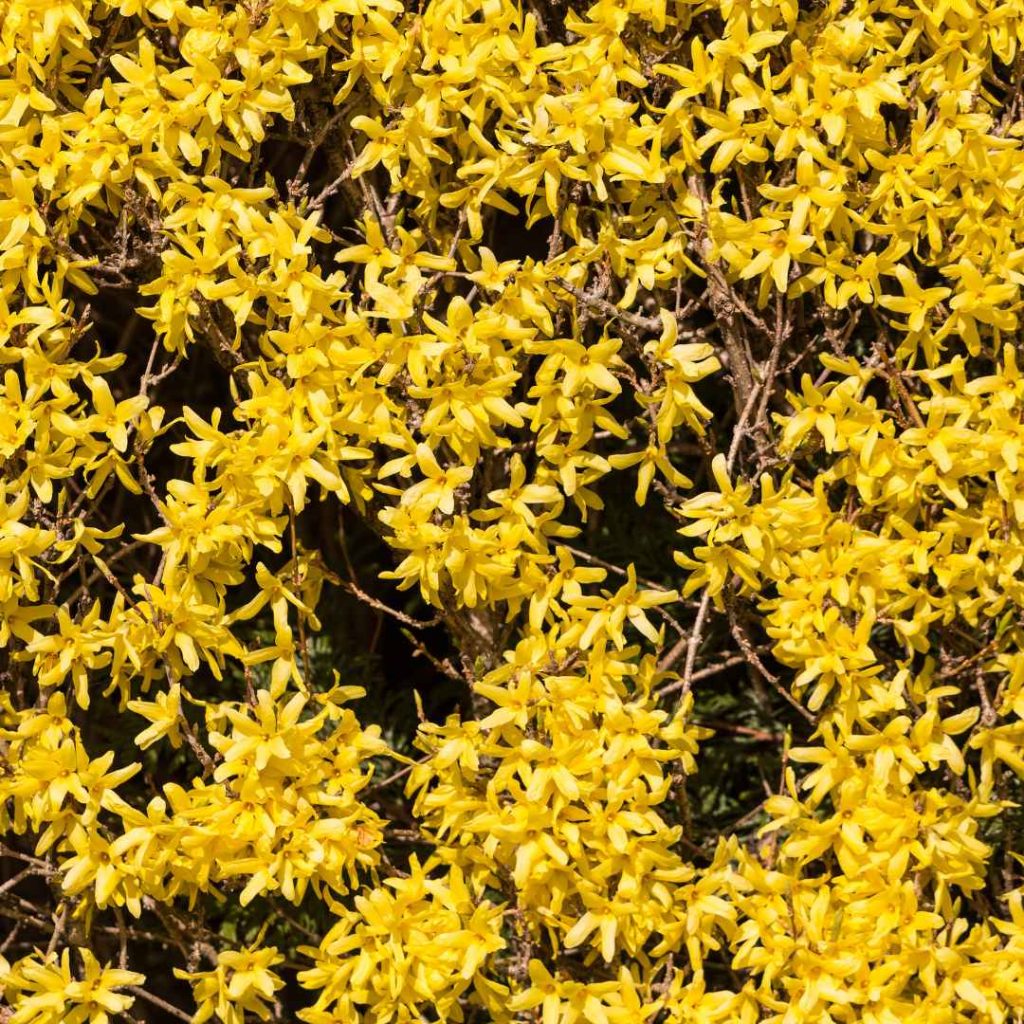
The deciduous shrub known as winter jasmine is prized for its vivid yellow blossoms, which open in late winter or early spring.
Although they are not fragrant, these flowers add early color to the garden and make a dramatic contrast with the plant’s bare green stems.
The ideal growing conditions for winter jasmine are sunny to partly shaded areas with well-drained soil; full sun promotes the best flowering. Watering the soil on a regular basis is vital, especially in dry spells, but do not overwater it.
Cutting back damaged stems to the base and thinned out overcrowded areas promotes air circulation. Pruning is necessary to maintain the desired shape and stimulate new growth.
Because its long stems can be trained to produce a cascading effect, winter jasmine frequently benefits from support in the form of a trellis, wall, or fence.
This adaptable plant looks good as a ground cover on banks or slopes, adds winter interest and early color when trained against a wall or over a trellis, and looks good mixed in with other early-blooming plants and evergreen shrubs.
Hellebore (Helleborus Spp.)
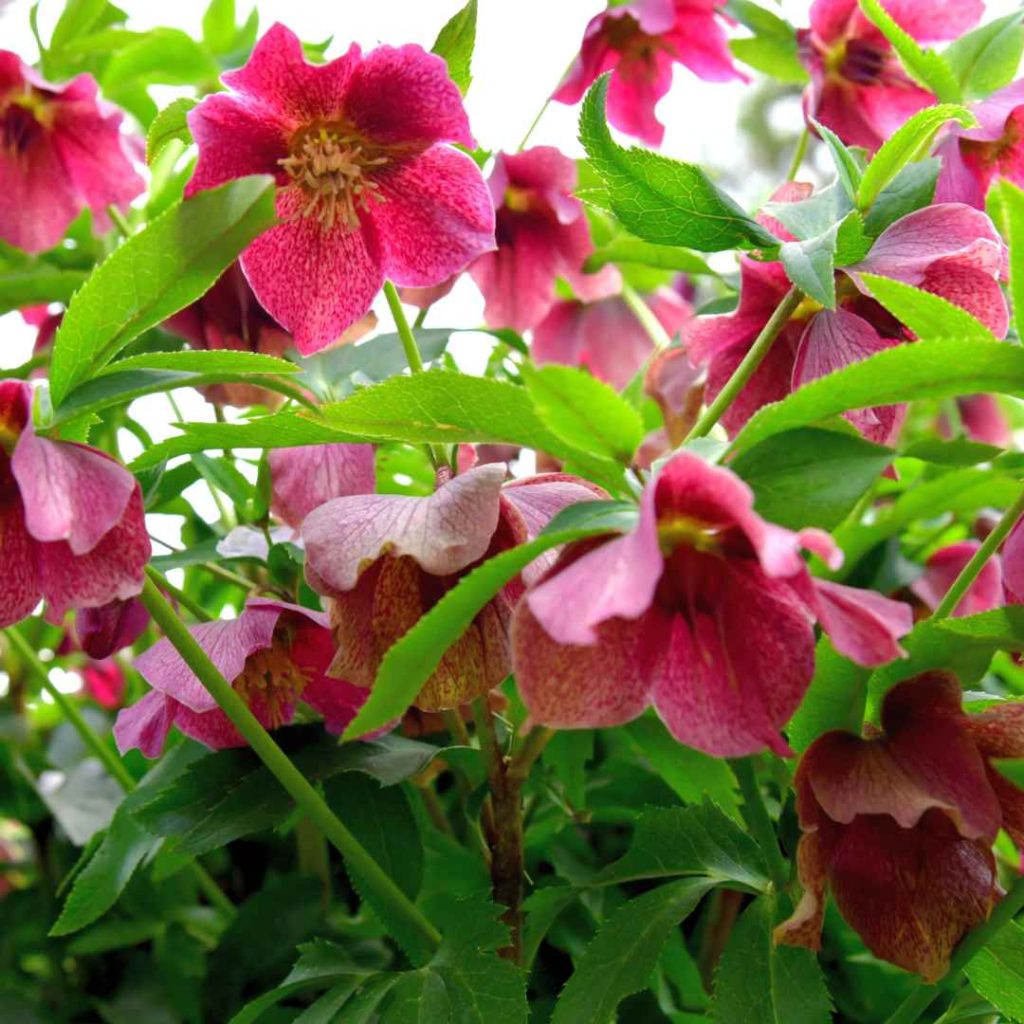
Hellebores, also known as “Christmas Roses” or “Lenten Roses,” are hardy perennials that bloom from late winter into early spring. They come in various colors and are part of multiple species and hybrid varieties.
Hellebores thrive in light, regular watering, and rich, well-drained soil with high organic matter content.
They are ideal for woodland gardens or planting beneath trees and shrubs, as they grow well in partial to full shade.
Snowdrop
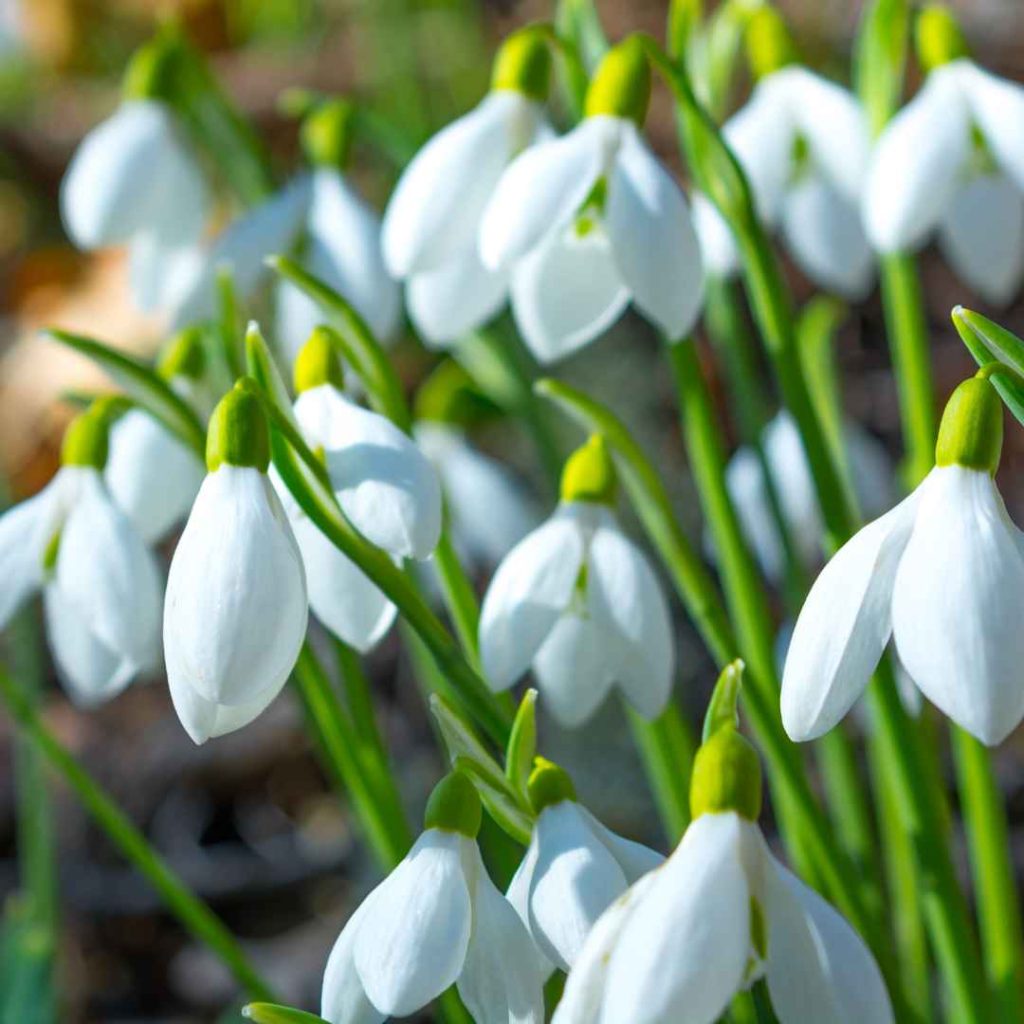
Snowdrops are small, delicate bulbs that bloom early in winter, with their white, nodding flowers lasting several weeks.
They are popular for winter gardens due to their graceful, arching flowers and small size, typically growing 4-6 inches tall. In colder climates, they should be planted in the fall and prefer well-drained, organic soil.
Snowdrops can tolerate full sun or partial shade, but prefer a spot with sunlight in winter and shade in summer, such as beneath deciduous trees. Plant snowdrop bulbs with pointed ends facing up, three inches apart and two to three inches deep.
They can be arranged in clusters for a naturalistic appearance or line borders and walkways for an eye-catching display.
Snowdrops can withstand below-freezing temperatures and snow cover, making them ideal for early winter blooms in colder climates. They can be combined with other winter plants to create a vibrant, colorful winter garden.
Winter Heather (Erica Cornea)
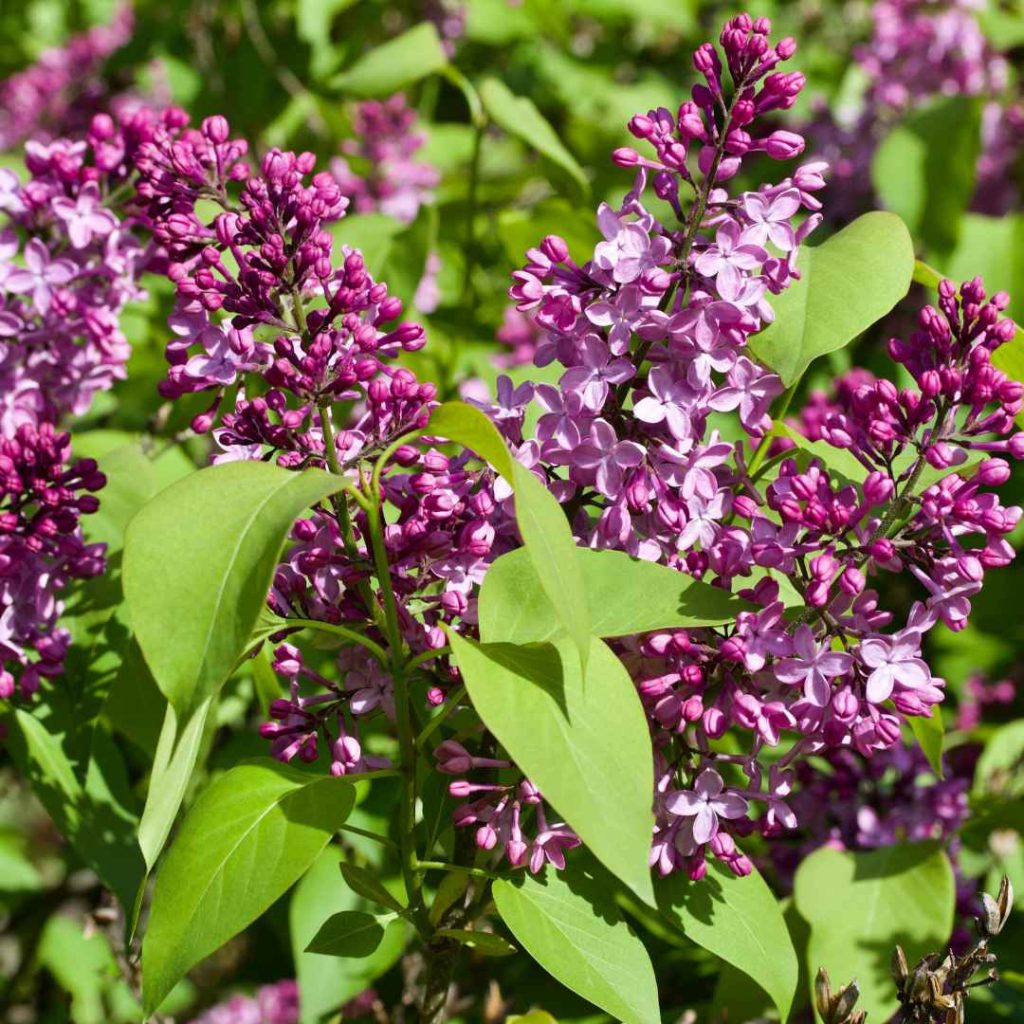
Winter Heather, also known as Erica cornea or “Spring Heath,” is a low-growing evergreen shrub that blooms from late winter to early spring.
Its foliage resembles needles and forms a dense mat, with popular varieties including “Springwood White,” “King George,” “Myretoun Ruby,” and “Winter Beauty.”
It prefers acidic to neutral soils for winter hedging, but proper drainage is necessary to avoid root rot. Winter Heather needs regular watering and prefers full sun to partial shade.
To maintain shape, lightly trim the plants after flowering. To encourage healthy growth, fertilize early spring with a balanced slow-releasing fertilizer and mulch with pine needles or bark.
Winter Heather is suitable for colder climates due to its hardiness in USDA zones 5-7. Its flowers are hardy and resistant to snow and frost, and when combined with other plants, it provides height, a striking bloom form, and layers of color and texture.
Winter Heather adds color and texture to slopes, banks, borders, rock gardens, and containers, aiding in erosion control and adding color to difficult-to-grow areas.
Camellia (Camellia Japonica)
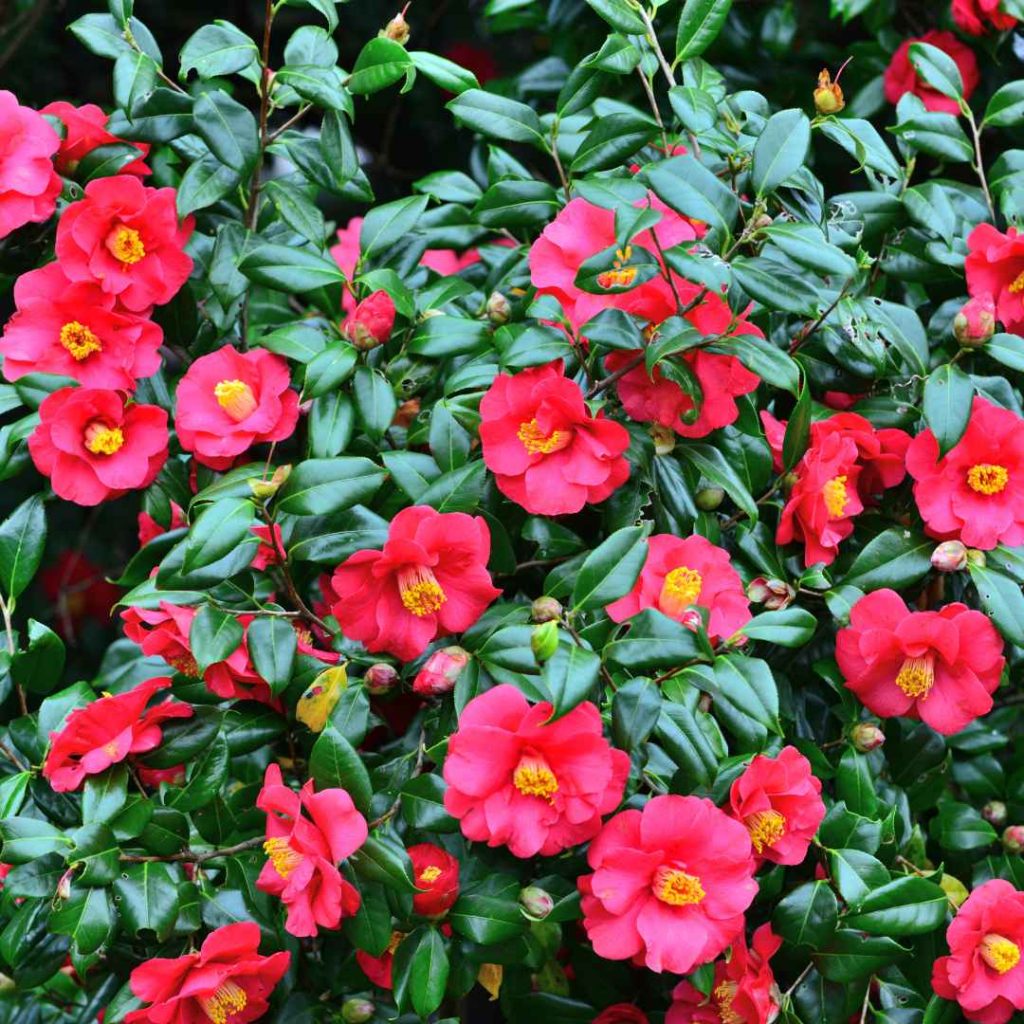
Evergreen shrubs or small trees, camellias are prized for their glossy, dark green foliage and exquisite, rose-like blooms that appear in late fall or early spring.
Among the most well-known varieties are Camellia x Williamson, a hybrid between C. japonica and C. saluenensis, which is prized for its long flowering period and hardiness, Camellia sasanqua, which blooms earlier, and Camellia japonica, which blooms in shades of pink, white, and red.
Camellia care guidelines include keeping the soil pH between 5.5 and 6.5 acidic and making sure the drainage is adequate to avoid root rot.
They prefer partial shade, especially in regions with hot summers. They should receive regular watering, but not so much that they become soggy.
After blooming, the plant should be lightly pruned to shape it and get rid of any dead or damaged branches. Fertilization should be done in the spring and again in the middle of the summer.
When designing a garden, camellias can add winter interest and serve as great focal points near patios, pathways, and entrances. In addition, they work well in hedges, woodland gardens, mixed shrub borders, and big containers.
When given the appropriate care and species selection, camellias can make a visually striking addition to your winter garden, bringing brilliant color and interest when most other plants are dormant.
Witch Hazel
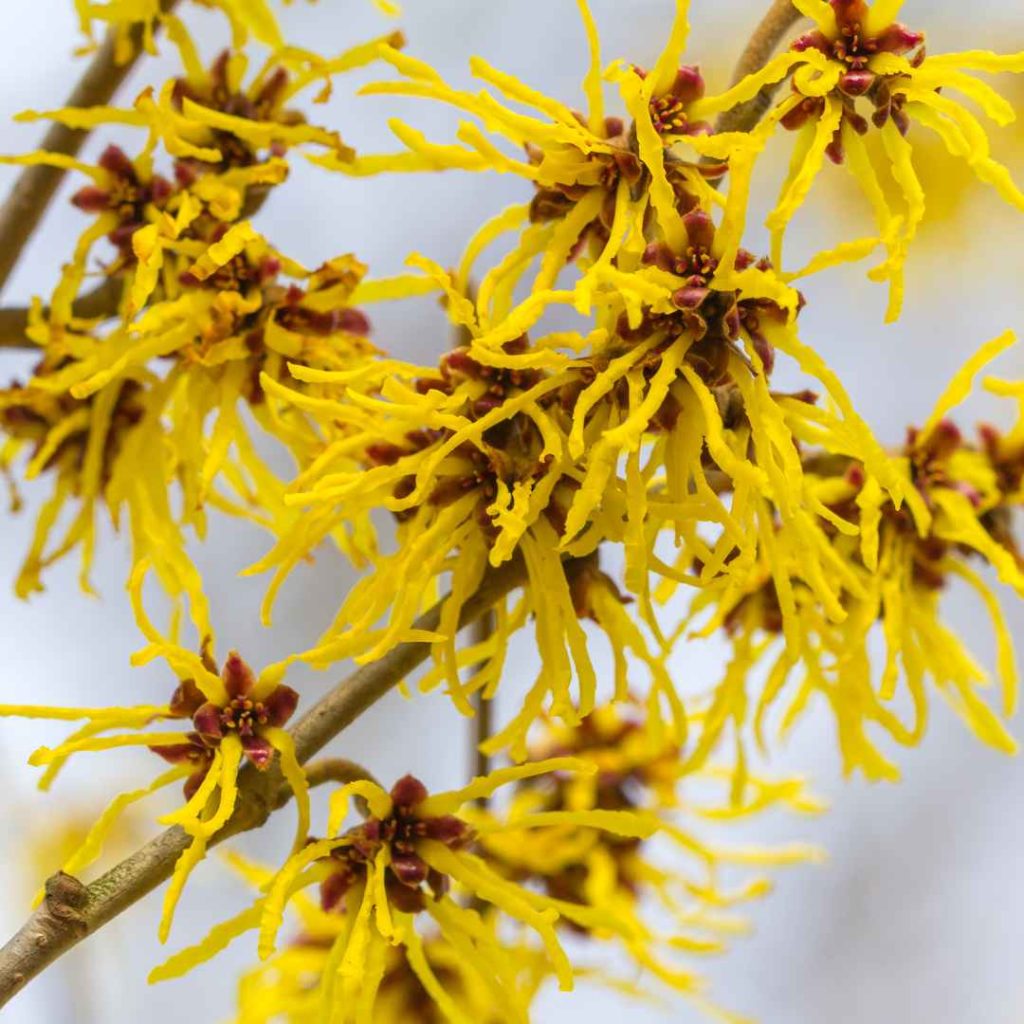
The unusual and vibrant witch hazel plant is well-known for its characteristic, ribbon-like petals, which come in a variety of colors and can be yellow, orange, red, or maroon.
These flowers give the winter garden a sensory element and resemble spider webs.
Witch Hazel grows best in loamy, well-drained soil that is slightly acidic rather than neutral. It grows well in both full sun and partial shade and can withstand a wide range of pH values. Watering plants on a regular basis is crucial, particularly in dry spells and when they are first emerging.
A balanced, slow-release fertilizer should be applied in the early spring to promote healthy growth and flowering. Fertilization is crucial.
Pruning is required to get rid of damaged or dead branches and preserve the shape of the plant. Witch Hazel can be grown in a variety of climates because it is hardy in USDA zones 3 through 8.
The open, vase-shaped growth habit of witch hazel breaks up the monotony of flat, dormant landscapes by adding vertical interest in the winter garden.
With their striking colors and unique flower structure, its early blooms draw attention to themselves and act as a focal point in winter gardens.
The ribbon-like petals give garden design depth and intricacy. Witch Hazel complements other winter interest plants and pairs well with early spring bloomers. It looks good as a specimen plant in garden beds or as part of mixed shrub borders.
Cyclamen
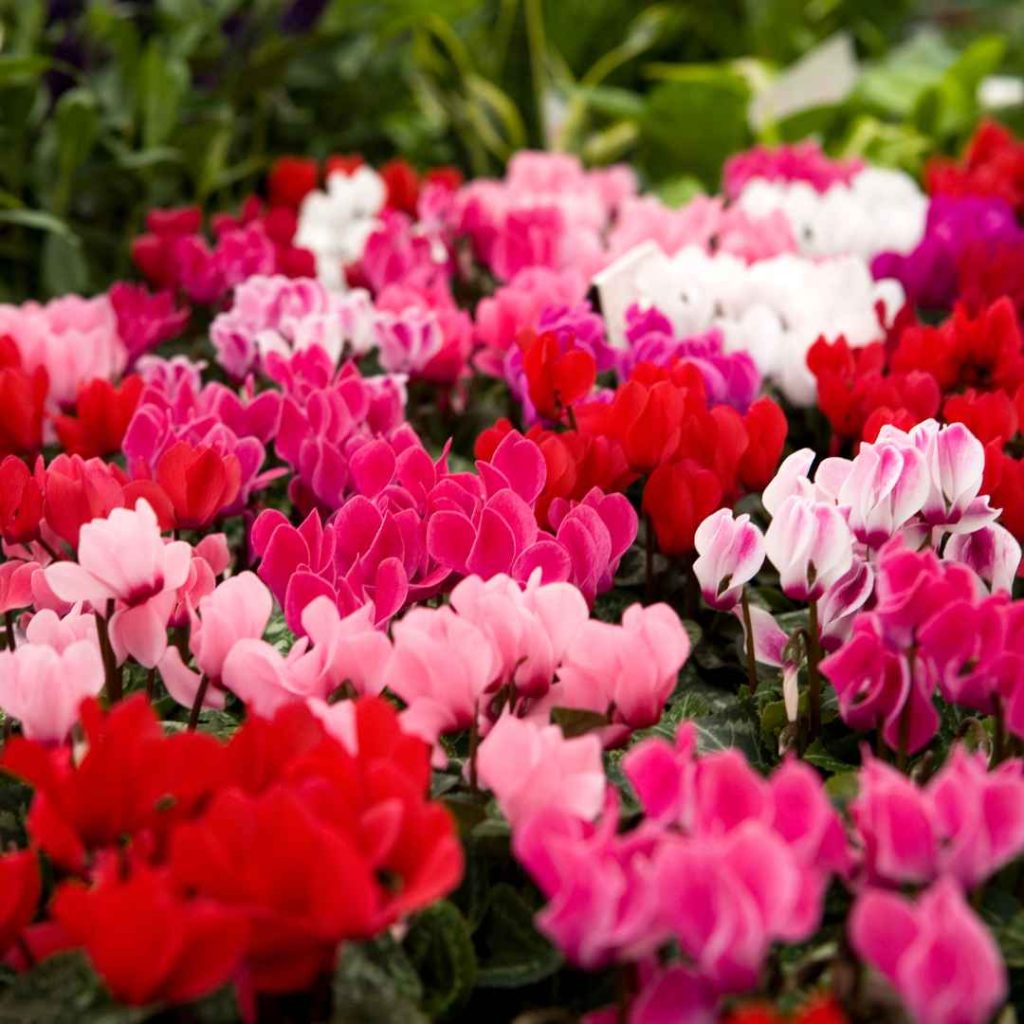
A perennial that blooms in the winter, Cyclamen coum is prized for its pretty foliage and delicate flowers. It is available in a number of hybrids and varieties, such as “Pink,” “White,” “Red,” “Purple,” and “Silver Leaf.” Cyclamen coum grows in USDA zones 4–8, preferring well-drained soil rich in organic matter.
It requires good drainage and does best in soil that is neutral to slightly acidic. To avoid rot, plant at a depth of one to two inches, leaving a small amount of space at the top. Cyclamen coum can tolerate cold weather and frost and is hardy in USDA zones 4–8.
You can plant cyclamen coum in woodland areas, rock gardens, shade gardens, shady spots, borders, edging plants, containers, and beneath trees or shrubs. It is a versatile plant that can be used to add beauty and interest to winter gardens because of its delicate flowers and lovely foliage.
It can flourish and add a pop of color to otherwise drab landscapes with the correct placement and care. Cyclamen cum can add a pop of color to otherwise drab landscapes with the correct placement and care.
Winter Aconite
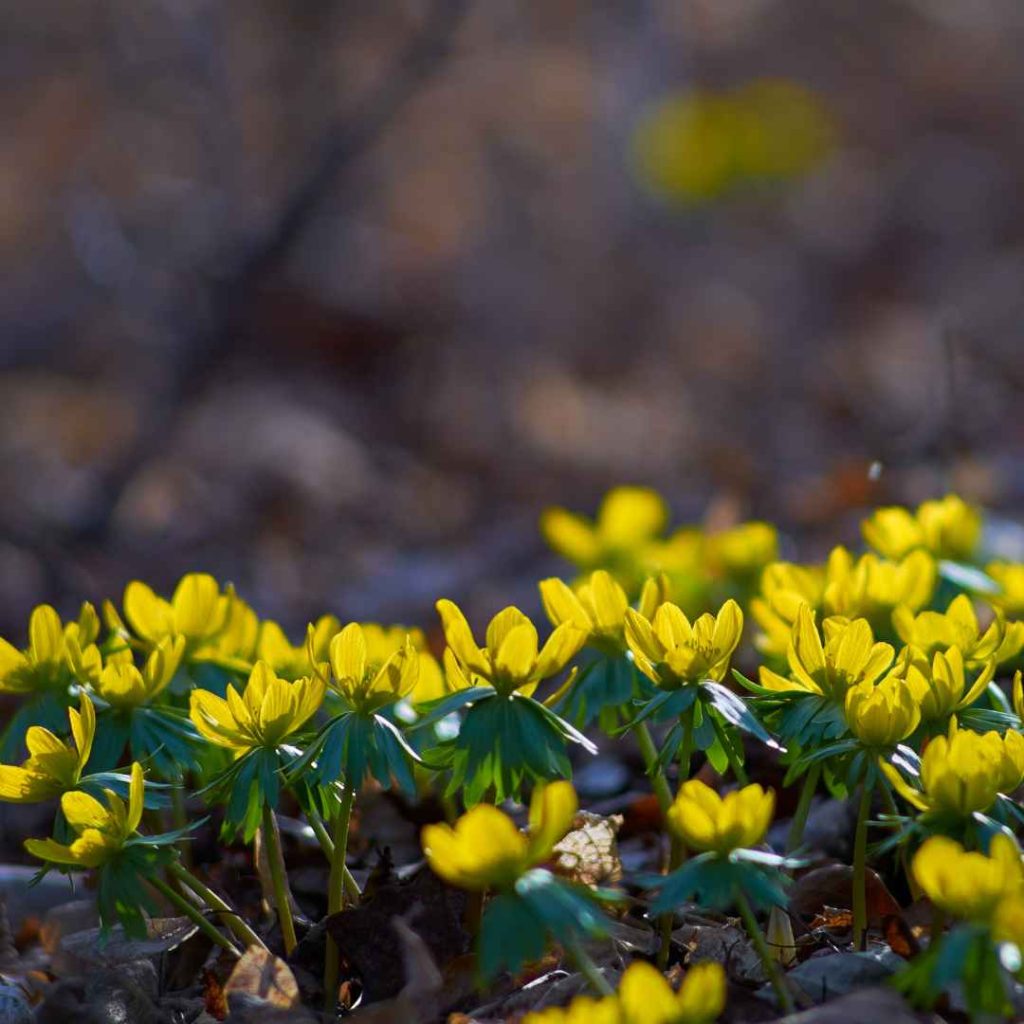
The delightful perennial winter aconite is well-known for its vivid yellow blooms, which appear in late winter or early spring. As it becomes more natural, the plant spreads and reaches a height of 4–6 inches.
It typically blooms in late January or early March, though this varies based on the environment and meteorology.
Winter Aconite grows best in soil that is humus-rich, well-drained, and can tolerate both full sun and partial shade. It can grow in a variety of climates, but it thrives in USDA zones 4 through 8.
Winter Aconite can be naturally occurring in woodland gardens or beneath deciduous trees to be incorporated into beds or borders. When the flowers appear before the trees fully leaf out, plant in drifts or groups to make a stunning golden carpet.
Use it in mixed flower beds with other early bloomers such as hellebores, snowdrops, and crocuses, or beneath shrubs and along the edges of larger garden beds. On a smaller scale, Winter Aconite can be planted in pots with potting mix that drains properly and adequate drainage.
Winter aconite is a delightful addition to any winter garden, adding much-needed color and interest during the colder months with its bright yellow flowers and early bloom time.
Mahonia
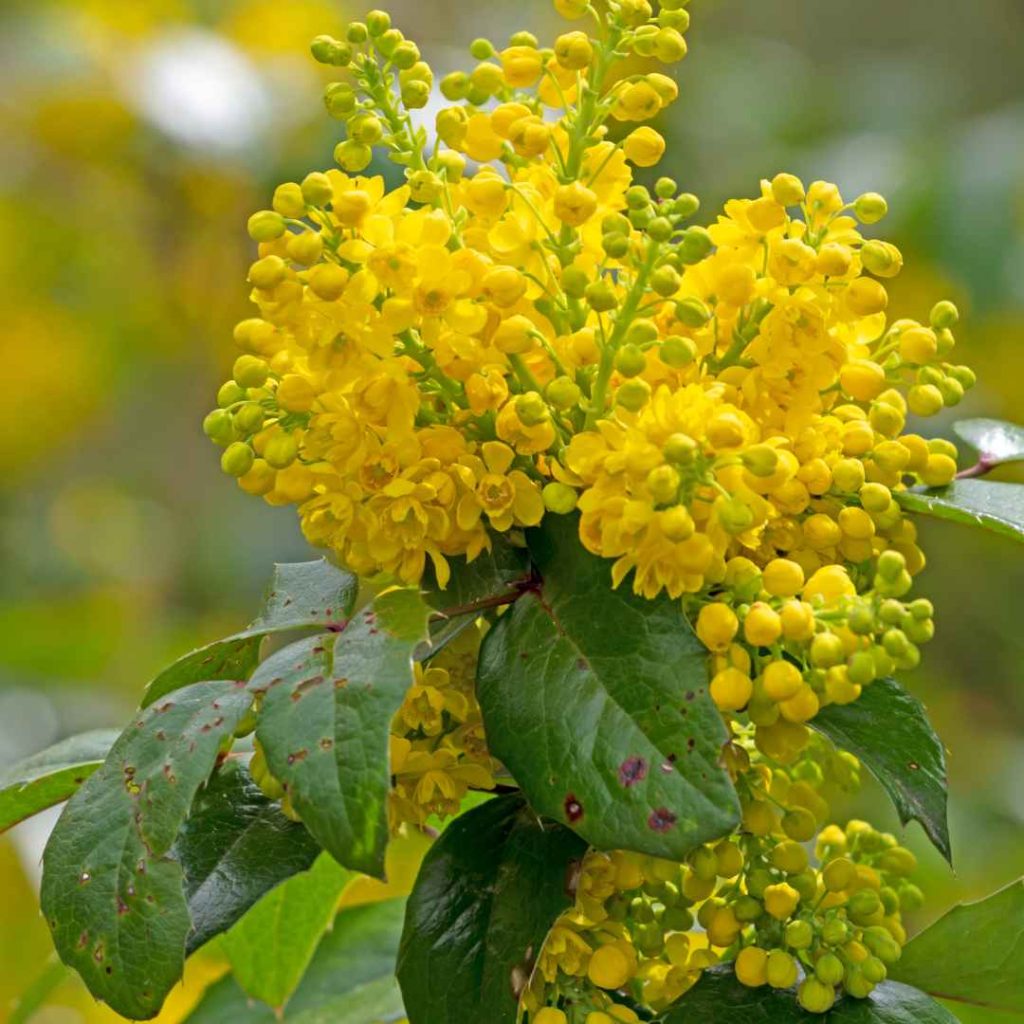
Mahonia, also known as Oregon grape, is an evergreen shrub with vibrant yellow flowers and foliage. It belongs to the Berberidaceae family and is prized for its year-round interest.
Mahonia shrubs have glossy, leathery leaves that resemble holly leaves and can grow up to 10 feet tall.
They attract pollinators like butterflies and bees. The plant thrives in loamy, well-drained soil with a pH range of slightly acidic to neutral. Regular watering is essential, but not too much. Fertilization is crucial for healthy growth and flowering, and light pruning is advised to shape the plant.
USDA zones 5-9 are suitable for mahonia growth. Mahonia adds color and texture to winter gardens, creating a dramatic contrast with icy or snowy scenes.
It is also a great option for garden bed backdrops, informal hedges, and privacy screens. Mahonia is beneficial for wildlife, especially in winter, as its fragrant flowers attract pollinators and yield dark blue berries that resemble grapes.
